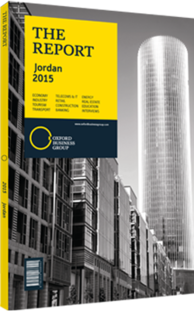Government working to increase private sector participation in the economy
Dependent on energy imports and constrained by regional instability, Jordan’s ability to deliver critical projects has been limited in recent years. However, with developments planned across a host of sectors in the medium term, the government is working to increase private sector participation in projects ranging from renewable energy to infrastructure.
Investors had previously called for reforms to reduce barriers to market entry, and on this front the government has made good progress, most notably with a new public-private partnership (PPP) law that was passed in spring 2015. The PPP law, in combination with ongoing macroeconomic reforms, will help the government accomplish critical projects, including a planned rail network and new highways. Jordan hopes these reform measures will enable it to secure backing for the $20bn worth of new investment opportunities announced during the MENA World Economic Forum hosted at the Dead Sea in May 2015.
Background
Following the launch of a wide-scale privatisation programme in the late 1980s, PPP development in Jordan kicked off in 1995, when the government began conducting feasibility studies for proposed pilot projects such as the Samra Waste Water Treatment Plant (SWWTP). In mid-2003 the Jordan Education Initiative became the nation’s first PPP project, though it was not until 2007 that the Executive Privatisation Commission (EPC) began to formalise related legal and institutional frameworks. The kingdom officially launched its PPP programme in June 2008, with regulations declaring the EPC responsible for overseeing projects with a variety of structures, including build-own-operate, build-operate-transfer (BOT) and build-own-operate-transfer, though the BOT model is the preferred form.
Since 2000 the government has proposed an estimated 35 PPPs or more to be undertaken through to 2015, with projects thought to cost a total of between $750m and $1.1bn per annum, according to Abdel-Rahman El Khatib, the chairman of the EPC. The majority of projects have concentrated on infrastructure development, as opposed to services. Major planned projects include the Jordan National Railway Network, a planned light rail system, the water desalination project in Aqaba known as the Red Sea-Dead Sea Conveyance Project, the Amman Ring Road, and a variety of energy and utilities schemes. These will build on the early successes of high-profile PPPs like the SWWTP and the expansion of Queen Alia International Airport, which was carried out under a 25-year BOT concession, through which the state retained ownership of the airport, receiving roughly 54.5% of its gross revenues for the term of the deal.
New Challenges
With the state having privatised over $1bn in assets since the 1990s, PPPs are viewed as a key avenue for private sector development; however, they have only recently been formally codified. Regulations issued in 2008 under the Privatisation Law No. 25 of 2000 effectively allow for all types of PPPs in most sectors aside from mining, but a law directly addressing PPPs only came into effect in November 2014. Under the law a new council will evaluate all private sector contracts. Headed by the prime minister, the PPP Council will include the governor of the Central Bank of Jordan, the director of the PPP unit, and the ministers of finance, industry and trade, and planning and international cooperation.
The PPP Council will be tasked with developing policies for joint projects between the public and private sectors, identifying priorities, making decisions on project proposals and submitting them to the Cabinet for approval. “It is a good law, and it will lay the foundation for a number of projects we need, particularly in energy, water and infrastructure,” Ruba Jaradat, CEO of the private sector lobby group Jordan Strategy Forum, told OBG. As the government continues to work across a number of sectors, private participation is set to increase greatly in the coming years.
You have reached the limit of premium articles you can view for free.
Choose from the options below to purchase print or digital editions of our Reports. You can also purchase a website subscription giving you unlimited access to all of our Reports online for 12 months.
If you have already purchased this Report or have a website subscription, please login to continue.

